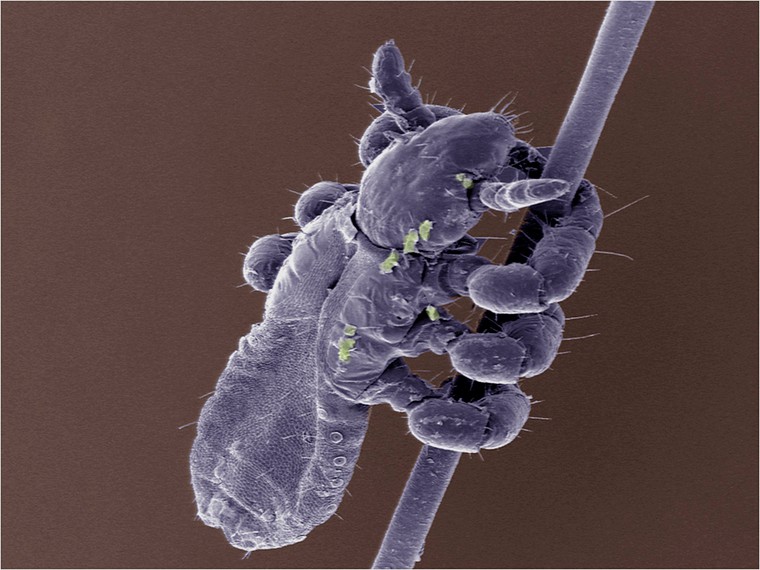This winter looks set to be lousy for school children – Reading Biologist Dr Alejandra Perotti explores the science of head lice and how to get rid of them in a new post for The Conversation.

Parents are being warned there could be a big rise in head lice outbreaks in schools this winter. The health charity Community Hygiene Concern has predicted that low-income families will be hit hardest after a change in NHS England guidance, means GPs are now routinely prevented from prescribing any treatment for the parasites.
Transmission of head lice among toddlers and children is common and is often the result of close and frequent head or hair contact. Toys, furniture, carpets and clothing can all offer temporary habitats to lice that will jump on a child if the chance arises – offering head lice the opportunity to be transferred and to thrive.
But while schools and parents often talk about “head lice outbreaks” the reality is that humans have had head lice living on them for thousands of years. And they were so common in the past that almost every family was in possession of a special comb to remove and keep them under control or in low numbers.
Our ancestors produced fine combs using different materials, including bone, wood and even cactus spines, to allow a minimum space between the teeth of the comb to remove lice. And as the majority of people in the community had head lice – not just infants – these combs were the main or only tools used to tease or brush the hair.
In fact in Poland in the 1600s, a hair style known as “plica polonica” or Polish plait, was quite fashionable. The style, which resembles a matted mass of hair, formed as the result of neglect – often combined with a severe head lice infestation – and would be sticky and moist.
The science of head lice
The cycle of head lice starts when a female lice lays eggs which are attached to the hair by gluing them at the root end. The lice produce a very strong, cement-like substance to do this.
The position of the newly delivered egg (known as a nit) is approximately 5mm from the scalp. This distance cannot be modified, or the embryo will not develop – because the temperature won’t be right.
During development, nits follow a specific regime of temperatures, a slight decreasing gradient of temperature as the hair grows and the nits become more and more distant from the scalp. So those nits closest to the scalp are the most recently laid on the hair – and chances are these are healthy living embryos. Those nits more than two centimetres away from the scalp look very obvious, with a whitish reflection. These are the empty eggs shells.
How to get rid of them
Two forms of head lice should be certainly considered as targets for control: the females and the newly born nits. To remove both forms, a fine comb – known as lice or louse comb – has been shown to be effective in terms of treatment and prevention of heavy lice infestations.
Of course, pharmacies tend to be well stocked with formulas and solutions to kill head lice – but there are other natural or non-chemical treatments that may still be worth a try. Traditional plant remedies are still used in continental Europe – for example, a herbal infusion from the chickpea plant. The infusion is made from dried beans and is then applied on the scalp.
In the UK in Tudor times, Hyssop’s oil, an aromatic herb was also used as treatment for head lice. And Hyssop’s oil is still used to control lice to this day.
Considering the specific temperature needed for lice eggs to develop – and that drastic changes in temperature kills them – new methods are also now being developed to incorporate heat as part of regular treatment. Investigations on devices producing hot air indicates high efficacy when properly applied on a regular basis.
So to combat head lice without using messy shampoos and toxic chemicals, parents may want to try a combination of treatments: a traditional metal louse comb, as well as herbal infusions to apply topically on the hair or scalp, along with exposure to short but regular use of a hot hair dryer.
This post was first published on The Conversation, 19 November 2018. Alejandra Perotti is Associate Professor in Invertebrate Biology at the University of Reading. Her research focuses on lice and mites that are parasites of primates and the ancient DNA of lice and mites and their extinct hosts. She is also interested in forensic acarology: the use of mites (Acari) in forensic investigations, crime case reports and research.
